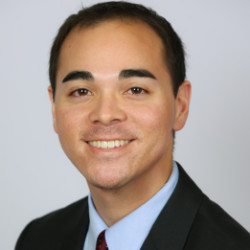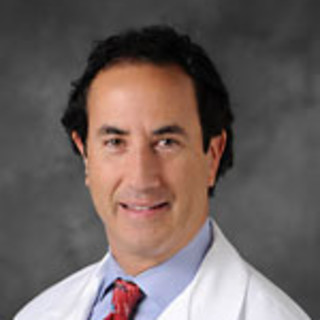Of all the little moments I remember from residency, a single email stands out: the message, sent to all trainees, implored us to help address a critical shortage of platelets and plasma by donating blood. I wanted to help, but my body thankfully pulled me back to reality, reminding me that I was 1) functioning on an average of four hours of sleep each night, 2) chronically dehydrated, and 3) almost always hungry for no good reason at all. It occurred to me then that maybe I should skip the "blood" component of the sacrifice and let "sweat" and "tears" be enough.
It's no secret that residents are underpaid. But in drafting this post, a dark voice emerged from a corner of my mind — a phantom critic admonishing me in the timbre of American capitalism: "Can you prove that residents are worth more than we pay them?"
I think the right question to ask is not "How much is a resident worth?" but instead, "What does it cost to be a resident?" It is vital to consider the full ledger of residency training, tangible and otherwise. They make a relatively low income for their level of professional education while learning how to shoulder the responsibility of human lives and the trauma of other people's worst days, all while adapting to an eat-when-you-can, sleep-when-you're-done lifestyle. They endure a physical, emotional, and mental toll, missing social events, grappling with sleep deprivation and its long-term effects, they take on disordered eating patterns, and battle depression and suicidal ideation. In my own experience, I believe that many of these sacrifices helped me grow as a human being, and I am confident in my abilities as a surgeon, physician, and educator. But pride and peace do not erase the sense that for years, my labor was undervalued — by society, by policy, and by the institutions I served.
A majority (two-thirds) of federal funds for resident pay (totaling $20 billion dollars in 2024) comes from Medicare, which is then further divided into Direct Graduate Medical Education (DGME) and Indirect Medical Education (IME) payments. Through these payments, Medicare reimburses hospitals for a portion of resident stipends, benefits, faculty teaching time, and administrative overhead. In 2022, DGME payments totaled approximately $5.88 billion. In 1996, they were around $4.6 billion in 2025 dollars, meaning that while the number of trainees has increased substantially, the amount of funding allocated toward supporting their salaries for them has increased by only a little less than $2 billion dollars. By contrast, it is estimated that in 2025, the U.S. will spend about $2.5 billion dollars a day on national defense. The government funding for residency programs pales in comparison.
Current numbers paint a grim picture. In 1990, the average resident salary was about $31,500. Adjusted for inflation, that's around $61,000 today. The average resident salary in 2024 was approximately $63,000. Roughly speaking, a resident working 80 hours per week with three weeks of vacation is earning the equivalent of around $17/hour before taxes. This is the accepted hourly wage for a graduate of medical school who is charged with perioperative care, emergency consults, responding to codes, managing ventilators, running trauma activations, and performing procedures on patients who place their lives and trust in their hands. We function under the assumption that the "huge" salary bump residents receive after training will account for their sacrifices. But in truth, years of muted earning potential result in a diminished ability to take advantage of compounding interest compared to same-year peers who earn more immediately after professional school. For example, a lawyer in her first year out of law school will earn, on average, $135,000 or more, depending on the size of the firm and practice location, while an average first-year resident will earn half of that. This, combined with student loans (which may soon require trainees to take on more direct personal cost), is a jarring one-two punch upon graduation.
It is important to acknowledge that residency is a lot more accommodating than it used to be ("back in my day") — duty hours are limited, many programs have protected weekday hours for personal appointments, and most trainees have increased oversight/attending availability. Particularly for residents who have or are planning to have children, the ACGME has codified policies ensuring parental leave. But while it's wonderful that we have policies that allow more leeway for residents to start families while they are still in training and still typically in their 20s or 30s, we still don't pay them enough to care for their children without increasing strain and hardship; consider that childcare costs alone drive nearly 450,000 middle income families into a lower income range each year.
All of us who have been through training have paid our proverbial dues. We've missed birthdays, holidays, and funerals. We have retrained our sleep cycles multiple times over. We have lived on whatever food is available between consults or cases or rounds. We've moonlighted for extra cash (when allowed to). We've saved up to pay for board exams, loupes, fellowship interview applications and travel, and other hidden costs. And of course, many of us have taken on loans and debt, hopefully to be repaid (or forgiven). In a lot of ways, austerity is part of the gig. But while no one goes into residency expecting luxury, we still need to fully acknowledge that the situation is economically worse for residents today than it was even 10 years ago. The question we should be asking is not, "Can we afford to pay residents more?" but rather, "Can we afford not to?"
Our federal-level failure to invest meaningfully in GME reflects broader trends: We expect critical labor to subsidize our system. The same goes for teachers, farm and factory workers, and frankly, even practicing primary care doctors. Even as the U.S. faces a physician shortage, we fail to fund the pipeline. Our leaders urgently need to understand that producing excellent physicians requires significant and long-term financial investment, funding high-quality time in training. The value of a physician is not as simple as productivity units — it's the art of connecting with patients, the careful craft of clinical decision-making, the presence of mind to sign up for a career of lifelong learning to continually improve the quality of patient care. Our worth should not just be measured by how much money we bring through the doors of our institutions, but also measured by how well we support the health of the community. Our belief in these supposedly self-evident values must be reflected in our trainees' paychecks. It's not hard to imagine that if we can pay residents more than $17 an hour, they might be less worried about the rising costs of living and might be able to pay more attention to learning how to care for patients. Furthermore, if we want to attract trainees from rural areas who want to return to rural areas, we need to clearly understand that we will need to accommodate trainees who may not come from privilege (and in this context, having parental or family support is, frankly, a privilege).
I don't regret my training. I don't even regret what I sacrificed for it. But I do believe we have a duty to make the pathway behind us more humane, sustainable, and accessible. Residency training will always expose the heights and depths of humanity, and will therefore always demand a lot from people. But that doesn't mean it should exploit them.
Dr. Priya Rajdev is a surgeon specializing in minimally invasive abdominal wall reconstruction and benign foregut surgery in Phoenix, AZ. She is passionate about medical education, health literacy, and the importance of play in daily life. She enjoys gardening, reading, celebrating everyday absurdities and serendipities, and improv comedy. Dr. Rajdev was a 2024-2025 Doximity Op-Med Fellow.
Image by enisaksoy / Getty







